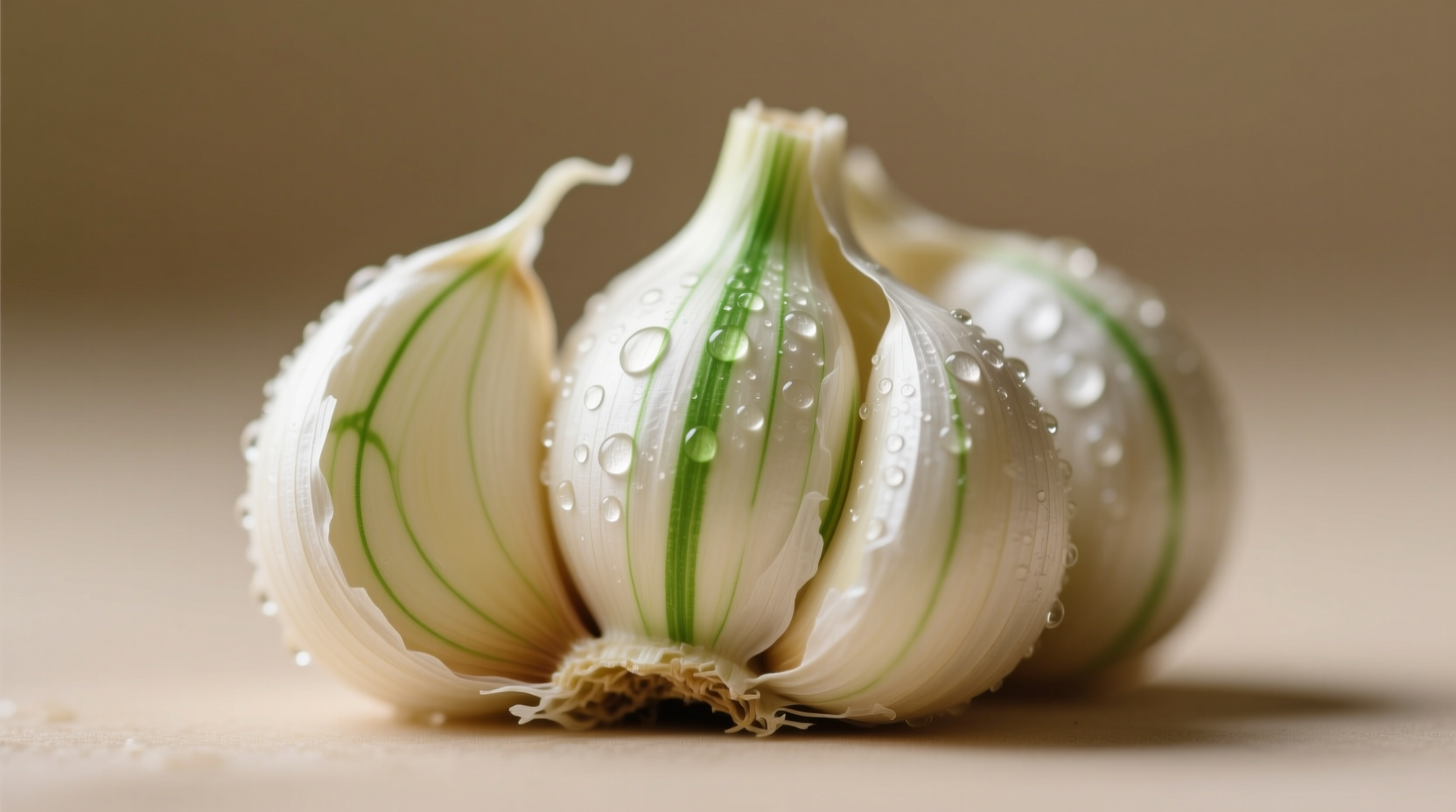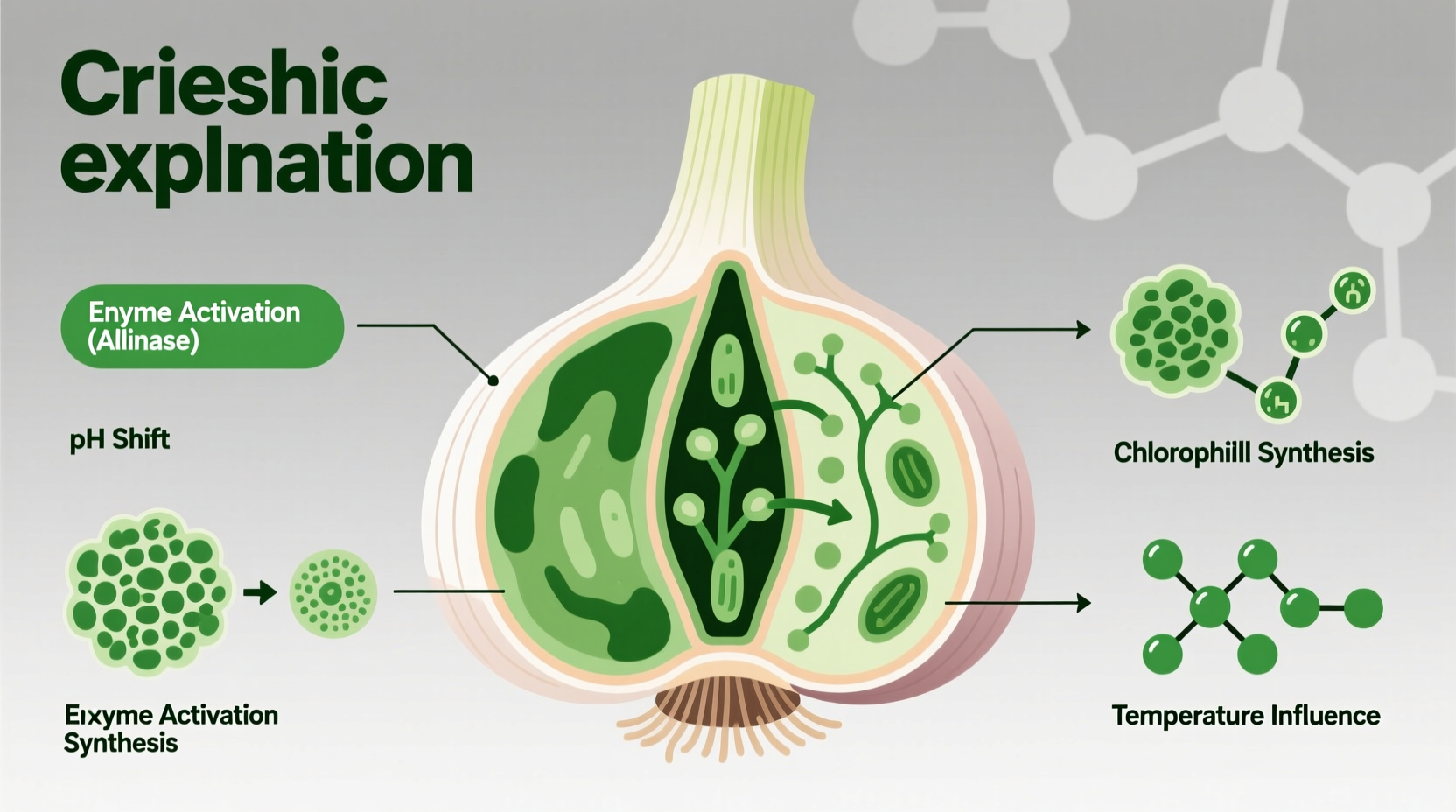The Science Behind Green Garlic: More Than Just a Color Change
When you discover green streaks in your garlic cloves or notice your garlic paste turning blue-green, you're witnessing a fascinating biochemical process. This transformation occurs when alliin (a sulfur-containing amino acid in garlic) reacts with amino acids under specific conditions, creating pyrrole compounds that appear green or blue. Unlike mold or spoilage, this is a natural, harmless reaction that affects appearance but not safety.
How the Greening Process Actually Works
The greening reaction follows a precise biochemical pathway:
| Stage | Chemical Process | Visible Result |
|---|---|---|
| 1. Cell Damage | When garlic is cut or crushed, enzyme alliinase contacts alliin | No visible change yet |
| 2. Allicin Formation | Alliin converts to allicin (responsible for garlic's pungent smell) | Strong aroma develops |
| 3. Acid Reaction | Allicin reacts with amino acids in acidic environments | Initial yellow tint appears |
| 4. Pigment Formation | Formation of tetrapyrrole compounds (similar to chlorophyll) | Distinct green or blue color emerges |
When Green Garlic Is Perfectly Safe (And When to Be Concerned)
Understanding the difference between natural greening and actual spoilage is crucial for home cooks. The USDA Agricultural Research Service confirms that garlic's color change under normal cooking conditions poses no health risk.
Safe green garlic typically shows:
- Green streaks running lengthwise through cloves
- Uniform blue-green color in garlic paste or pickled garlic
- Fresh garlic smell without sour or rotten odors
- Firm texture without mushiness
Potentially problematic garlic shows:
- Fuzzy mold growth on surface
- Soft, mushy texture throughout
- Sour or unpleasant odor
- Green color concentrated only at sprout points

Factors That Trigger Garlic's Color Transformation
Several common kitchen conditions accelerate garlic's greening process. Research from Oregon State University Food Sciences identifies these key factors:
Acidity Level
Lower pH dramatically increases greening. When garlic meets acidic ingredients like:
- Vinegar (in pickling)
- Lemon juice
- Wine
- Tomato products
The reaction occurs faster and more intensely. This explains why garlic turns green in aioli or when pickled.
Temperature Exposure
Cooler temperatures actually promote greening. Garlic stored between 40-50°F (4-10°C) develops color faster than at room temperature. This is why refrigerated garlic preparations often show more dramatic color changes.
Copper Contact
Using copper bowls or utensils accelerates the reaction. Even trace copper from water pipes can influence the process. Professional kitchens often use stainless steel specifically to minimize unwanted color changes.
Practical Tips for Managing Garlic Color in Your Kitchen
Whether you want to prevent greening or intentionally create it for visual appeal, these evidence-based techniques work:
To Minimize Greening
- Add garlic later in cooking when using acidic ingredients
- Blanch cloves in boiling water for 30 seconds before use
- Use older garlic - freshly harvested garlic greens more readily
- Avoid refrigeration for garlic preparations needing white color
To Encourage Greening (For Visual Appeal)
- Combine with lemon juice for vibrant green pesto
- Store in vinegar for naturally colored pickled garlic
- Use young garlic which contains more reactive compounds
- Add a pinch of baking soda to increase pH slightly
Does Green Garlic Taste Different?
Surprisingly, the flavor profile remains largely unchanged. The American Chemical Society notes that while the visual transformation is dramatic, the sulfur compounds responsible for garlic's characteristic flavor remain stable throughout the greening process.
Professional chefs actually value green garlic in certain applications:
- Mexican cuisine uses intentionally greened garlic in some mole recipes
- Asian chefs sometimes leverage the color for visual contrast in sauces
- Pickled green garlic makes attractive garnishes for charcuterie boards
When Green Means Go (Ahead and Use It!)
Unless accompanied by foul odors or mushy texture, green garlic is perfectly safe and flavorful. The color change represents a natural biochemical process, not spoilage. In fact, many traditional recipes across Mediterranean and Asian cuisines intentionally create green garlic for both visual appeal and subtle flavor variations.











 浙公网安备
33010002000092号
浙公网安备
33010002000092号 浙B2-20120091-4
浙B2-20120091-4